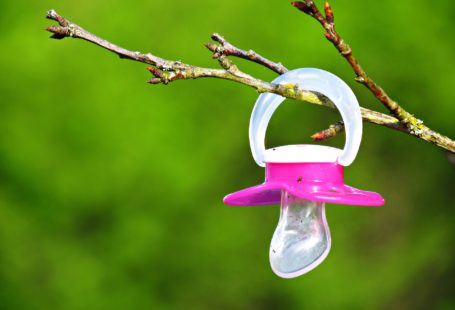What is going on in Pennsylvania? In November 2021, the Supreme Court of Pennsylvania affirmed the Commonwealth Court’s conclusion that a school district had improperly expelled a student, J.S., after J.S. had accused another student on social media of being a school shooter – outside of the school day and off school property. While the school district claimed that J.S.’s posts substantially disrupted the school environment, both the Commonwealth and Supreme Courts of Pennsylvania concluded that J.S.’s speech was protected under the First Amendment.
A few weeks later, in January 2022, the Commonwealth Court concluded that a Pennsylvania school district’s decision to expel a student, G.S., violated his constitutionally protected right to free speech. This expulsion resulted from the school district’s determination that G.S. posted a harassing and terroristic threat on the social media platform Snapchat in the form of violent song lyrics (“Everyone, I despise everyone! F*** you, eat sh*t, blackout, the world is a graveyard! All of you, I will f***ing kill off all of you! This is me, this is my, snap!”) that disrupted the school environment.
These cases came on the heels of another Pennsylvania case in which a school district suspended a student based on off-campus speech on social media. In this case, a cheerleader, B.L., essentially cursed out her high school on social media when she didn’t make the varsity team and was suspended from the junior varsity team as a direct result. Sound familiar? This case broke headlines last summer due to the perceived oddity of the Supreme Court weighing in on a cheerleader’s suspension. And while the case may seem utterly ridiculous at first blush, its impact on off-campus student speech remains important, especially as 2022 gets underway.
Tinker v. Des Moines Independent Community School District
To understand the First Amendment cheerleader case, Mahanoy Area School District v. B.L., it’s necessary to first address the 1969 landmark decision Tinker v. Des Moines.[1]
Tinker stemmed from a group of Des Moines public school students who wore black armbands to school to show their support for ending the Vietnam War. After the students were sent home for wearing the armbands, they sued the school district for violating their First Amendment rights. The District Court dismissed the case, holding that the school district’s actions were reasonable to uphold school discipline. The U.S. Court of Appeals for the Eighth Circuit affirmed.
When the case reached the Supreme Court, the Court decided that public schools could regulate student speech that “materially disrupts classwork or involves substantial disorder or invasion of the rights of others.” However, in their decision, the Supreme Court pointed out that students do not lose their First Amendment right to freedom of speech when they step onto school property. A school cannot take action to limit a student’s freedom of speech out of fear of possible disruption rather than any actual interference.
Since then, in Hazelwood v. Kuhlmeier[2] in 1988 and Morse v. Frederick[3] in 2007,the Supreme Court has held that student speech can be regulated when indecent speech is uttered on school grounds, promotes illegal drug use, or that others may reasonably perceive as “bearing the imprimatur of the school” such as in a school-sponsored newspaper. These instances of regulation combined with the ruling that schools can regulate speech that rises to disorder, such as in Tinker, create a set of characteristics that gives schools additional license to regulate speech that takes place off-campus.
Mahanoy Area School District v. B.L.[4]
The Supreme Court ultimately revisited the issue in the April 2021 “cheerleader case.” Pennsylvania high school student B.L. tried out for her high school’s varsity cheerleading team as a freshman. After learning that she made only the J.V. team, B.L. posted a Snapchat story while she was at a local store (not at school) with the caption: “F*** school f*** softball f*** cheer f*** everything.” After B.L.’s friends on Snapchat and members of the cheerleading team saw the post, the message spread to the coaches and school administration, and the school ultimately decided to suspend B.L. from cheerleading for the upcoming year.
B.L. and her parents subsequently filed suit against the school district in the Middle District of Pennsylvania. The District Court found in B.L.’s favor, finding that her speech was made outside of school and did not cause substantial disruption as outlined in Tinker. The Court ordered the school to reinstate B.L. to the J.V. team. On appeal, the Third Circuit[5] affirmed the District Court’s conclusion that the school district’s punishment violated B.L.’s First Amendment rights; however, the Third Circuit added that Tinker did not apply because schools cannot regulate student speech occurring off campus. The school district then filed a petition for certiorari with the Supreme Court, asking the Court to decide “[w]hether [Tinker]…applies to student speech that occurs off campus.”
When news of this case first broke, many people scratched their heads and wondered how a high school cheerleader’s case about being kicked off the team made it all the way to the Supreme Court. Well, the Supreme Court decided in 1969 in Tinker that schools can regulate on-campus speech if it involves substantial disorder. Now, with this case, the Supreme Court could have made history by addressing a public school’s involvement in regulating off-campus speech. (Not so frivolous, after all.)
In the Court’s June 2021 opinion written by Justice Breyer, the Court noted that three features of off-campus speech often block a school’s efforts to regulate it. These features include that (1) a school rarely stands in loco parentis (in place of a parent); (2) off-campus speech combined with on-campus speech means all the speech a student utters during the full 24-hour day; and (3) since America’s public schools are “the nurseries of democracy,” schools should have an interest in protecting a student’s unpopular expression.
So, what did the Supreme Court decide? The Court found that the school district violated B.L.’s First Amendment rights in suspending her from the team. However, while this decision affirmed the Third Circuit decision, the Supreme Court clarified that schools can regulate some off-campus speech including serious or severe bullying, threats, and breaches of school security devices including material maintained within school computers. Even with this clarification, the Supreme Court declined to set forth a list of what constitutes as off-campus speech or a test to identify it.
Justice Breyer wrote, “We hesitate to determine precisely which of many school-related off-campus activities belong on such a list. Neither do we now know how such a list might vary, depending upon a student’s age, the nature of the school’s off-campus activity, or the impact upon the school itself. Thus, we do not now set forth a broad, highly general First Amendment rule stating just what counts as ‘off campus’ speech and whether or how ordinary First Amendment standards must give way off campus to a school’s special interest to prevent substantial disruption of learning-related activities.” The Court clearly believes that context matters when determining what qualifies as off-campus speech.
Sure, context matters. For instance, consider G.S. from the opening of this article. Was he just posting song lyrics, or was he posting violent threats that he would later carry out? And was J.S. bullying a fellow classmate by suggesting the classmate looked like a school shooter, or was he pointing out legitimate harm that the fellow student posed? It’s a thorny subject, one the Supreme Court nimbly dodged by suggesting that each individual case should be considered “in context.”
One of my previous SCOTUS blogs examined how individual Supreme Court justices use their published opinions and dissents to ask for a case that would challenge a precedent set by a prior case. The Supreme Court used Mahanoy to do something similar by inviting other litigants to come forward with cases in which the Court would be able to set forth a First Amendment rule clarifying what counts as off-campus speech. The Court’s decision highlights how they really used this case as an example, leaving it to future cases “to decide where, when, and how” off-campus speech can be regulated by school districts in connection with the First Amendment.
As Justice Alito put it in his concurring opinion (and as cited in the Supreme Court of Pennsylvania Middle District in the J.S. case), “If today’s decision teaches any lesson, it must be that the regulation of many types of off-premises student speech raises serious First Amendment concerns, and school officials should proceed cautiously before venturing into this territory.”
Lessons Learned
Turns out that a case about a cheerleader being kicked off her team due to a vulgar social media outburst opened the door to much more. Mahanoy had the power to force the Supreme Court to decide on the constitutionality of a public school’s right to regulate off-campus student speech. And while the Court determined that the school had violated B.L.’s First Amendment rights, the Court did not use the case to set a precedent on student speech made off-campus…and via social media.
This isn’t the last time a case will force courts to consider and reconsider Tinker as it applies to off-campus student speech. And as technology develops, it’s only a matter of time before the Supreme Court confronts the intersection between off-campus school speech and social media again. As Pennsylvania’s courts have already seen, more school districts will be facing the crossroad between taking action against students and their off-campus speech while at the same time not violating their First Amendment rights.
And while some of the school districts discussed here seemed perhaps a bit too eager to suspend or expel their students, the fact remains that school districts are often stuck in a difficult spot when balancing their students’ First Amendment rights with legitimate concerns about protecting students from bullying and potential violence.
[1] Tinker v. Des Moines Sch. Dist., 393 US 503 (1969).
[2] Hazelwood Sch. Dist. v. Kuhlmeier, 484 U.S. 260 (1988).
[3] Morse v. Frederick, 551 U.S. 393 (2007).
[4] Mahanoy Area School District v. B. L., 594 U.S. ___ (2021).
[5] B.L. v. Mahanoy Area Sch. Dist., 964 F.3d 170 (3d Cir. 2020).




